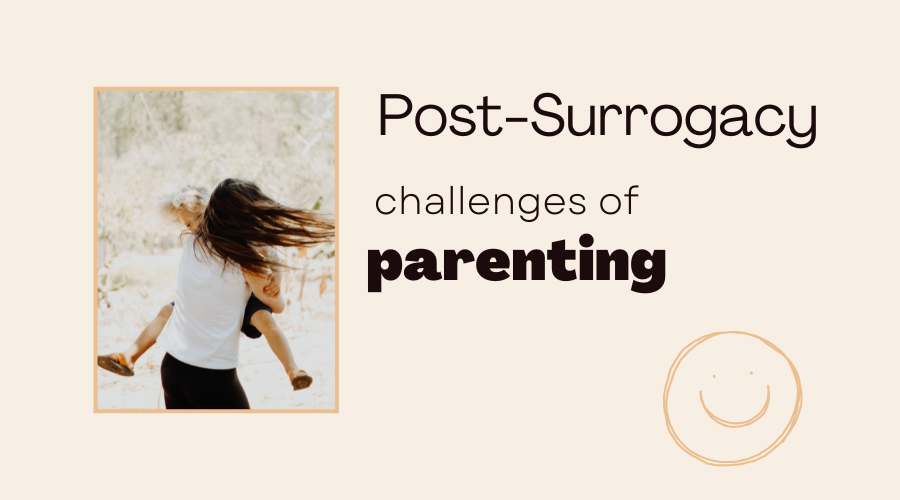Helping Children Adjust to a New Sibling After Surrogacy: A Comprehensive Guide
Surrogacy is a life-changing and beautiful journey that allows families to grow in extraordinary ways. The joy of welcoming a new baby is universal, yet when a child is born via surrogacy, the dynamics of family life can look a little different. For parents who already have children, the arrival of a new sibling through surrogacy can raise unique challenges, especially in helping the older child on how to guide your child adjust to the new family dynamic.
Whether you’ve recently chosen surrogacy or are about to, it’s important to prepare your child for the arrival of a sibling in a way that honours their emotions, answers their questions, and helps them build a strong bond with the baby. In this article, we will explore practical surrogacy support tips on how to guide your child through the transition and make the journey to siblinghood an exciting, positive experience for everyone.
How to guide your child about the surrogacy decision
Step 1: Start the Conversation Early
One of the most important steps in helping your child adjust to a new sibling via surrogacy is starting the conversation early. For children, unfamiliar situations can cause anxiety or confusion, especially if they aren’t clear on how the baby is coming into the world. Whether the child is an older sibling or a younger one, giving them ample time to process the concept of surrogacy and a new sibling is essential.
Use age-appropriate language to explain surrogacy, providing simple explanations of the process and why it’s happening. For example, you might say, “We’re going to have a new baby, and another woman is carrying the baby for us because she’s helping us grow our family.” Children will appreciate your honesty, and the sooner they are involved in the conversation, the more they will feel included and prepared.
Step 2: Use Books and Resources
Talking about surrogacy can be challenging for young children, and finding ways to explain the process in a way they can understand is crucial. There are several books available that help children comprehend the concept of surrogacy in a sensitive and engaging way.
Books like “The Kangaroo Pouch: A Surrogacy Story” and “My Story: A Surrogacy Story” can serve as conversation starters and give your child a visual understanding of the process. These stories normalise the experience and provide comfort to children who may be feeling anxious or uncertain. You can read these books together and use them as a jumping-off point for further discussions.
Step 3: Acknowledge Their Feelings
It’s completely natural for children to experience a mix of emotions when they learn they’re getting a new sibling. Excitement, curiosity, and sometimes even jealousy or confusion are all normal reactions. It’s important to acknowledge these feelings and make sure your child knows it’s okay to feel the way they do.
When you notice signs of jealousy or concern, talk with your child openly about their emotions. Reassure them that their feelings are valid and that it’s okay to feel unsure about the changes. Emphasise that no matter how the family grows, they are still loved and valued, and that your love for them will not change.
Step 4: Involve Your Child in the Process
Getting your child involved in preparing for the new baby is a great way to make them feel included and excited about their role as a sibling. Encourage them to help pick out baby clothes, decorate the nursery, or even choose a name for the baby. When children feel like they have a part in welcoming the new sibling, they are more likely to develop a sense of ownership and pride in the experience.
You can also involve your child in pre-birth activities, such as planning a family gathering to celebrate the pregnancy or creating a countdown calendar to mark the days until the baby’s arrival. The more involved they are, the more they will feel connected to the baby before they even meet them.
Step 5: Focus on Sibling Bonding After Birth
The arrival of a new baby can be overwhelming for older children, especially if they’ve been the center of attention. It’s important to help them transition into their new role as an older sibling with care and patience. Bonding with the new baby may take time, and that’s okay. Here are some helpful tips for fostering a positive sibling relationship:
- Special Time: Set aside time for your older child to spend with you alone, especially in the early days when much of your focus may be on the newborn. This reassures your child that they are still loved and important.
- Involve Them in Baby Care: Let your child help with simple tasks like bringing diapers, feeding the baby a bottle, or singing lullabies. This gives them a sense of responsibility and makes them feel special in their new role.
- Encourage Positive Interactions: Praise your child for being kind to the baby, even if the interactions are small. Reinforce the idea that being a big sibling is a wonderful role.
Step 6: Understand the Surrogate’s Role (When Applicable)
In some surrogacy situations, the surrogate may remain a part of the family’s life after the baby is born. This is particularly common in cases where the surrogate and intended parents have developed a strong bond. If this is the case, it’s important to explain the surrogate’s role to your child in a way that feels comfortable and respectful.
While every surrogacy arrangement is different, maintaining an open dialogue about the surrogate’s involvement can help your child feel more secure in the knowledge that their new sibling has a unique story, and that the love and support of many people were part of their journey.
Step 7: Be Prepared for Emotional Challenges
Adjusting to a new sibling, especially one born through surrogacy, can bring up emotions for both the child and the parents. It’s important to recognize that your child might not always adjust smoothly or immediately. They may need extra support as they navigate their feelings of jealousy, confusion, or even insecurity.
If your child is having difficulty with the transition, consider speaking with a child psychologist or counselor who specializes in family dynamics. Professional support can be invaluable in helping children process their emotions and ensuring a healthy relationship between siblings.
Conclusion
The arrival of a new sibling through surrogacy is an exciting and transformative event, but it also requires care and consideration as your family adjusts to the new dynamic. By preparing your child early, acknowledging their emotions, involving them in the process, and encouraging sibling bonding, you can help them embrace their new role with love and confidence.
Surrogacy can be a beautiful and inclusive journey for the whole family, and with the right support, your children will develop a lifelong bond with their new sibling—one that is filled with love, respect, and understanding.




